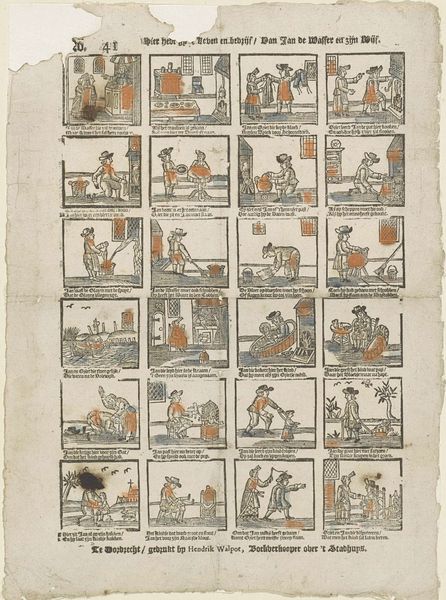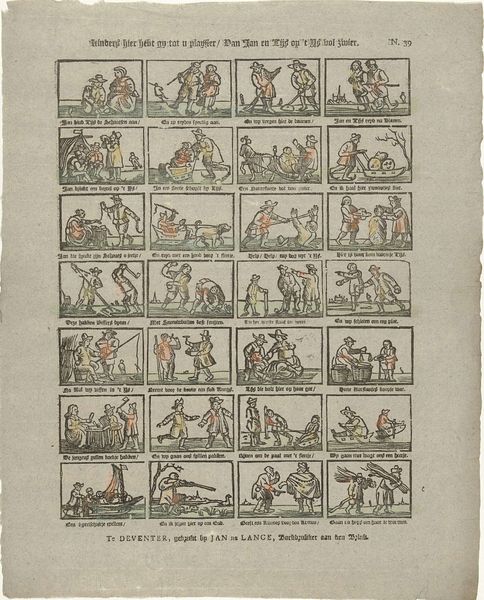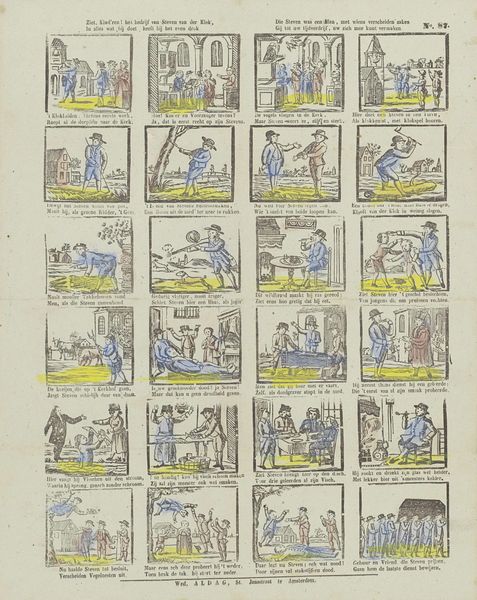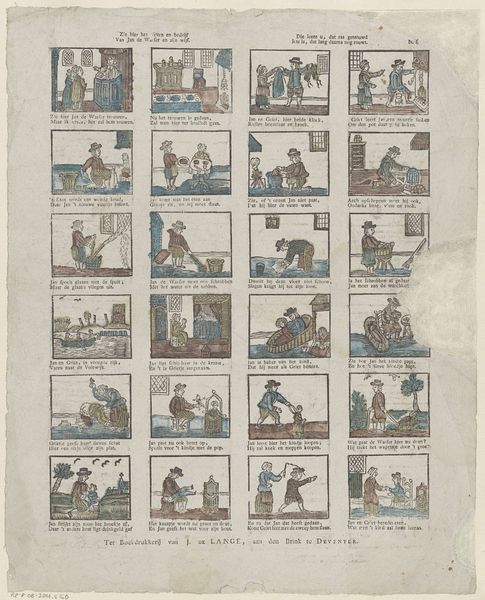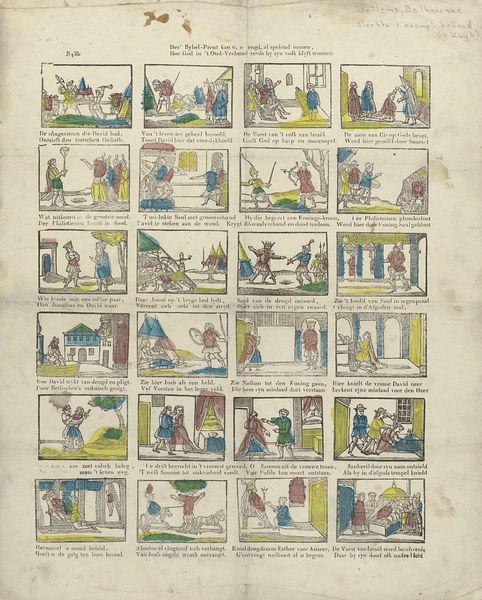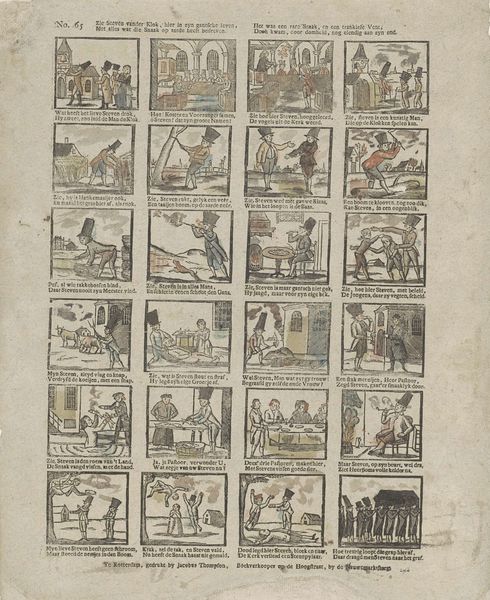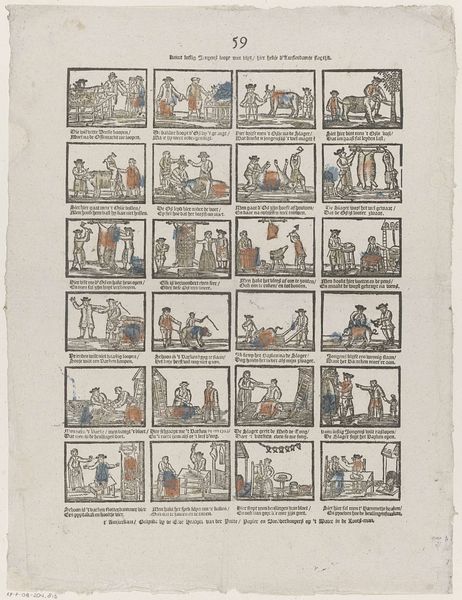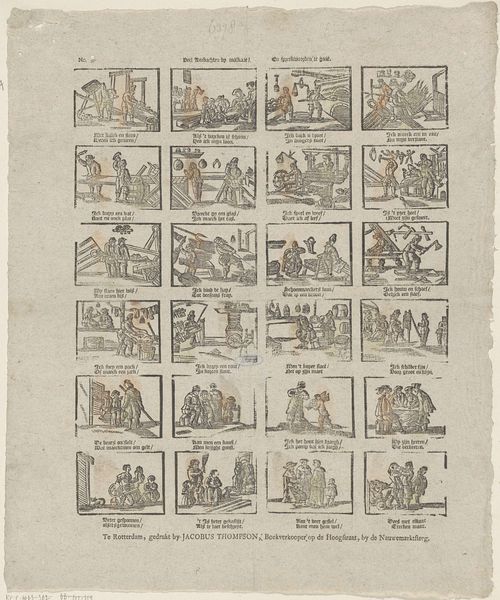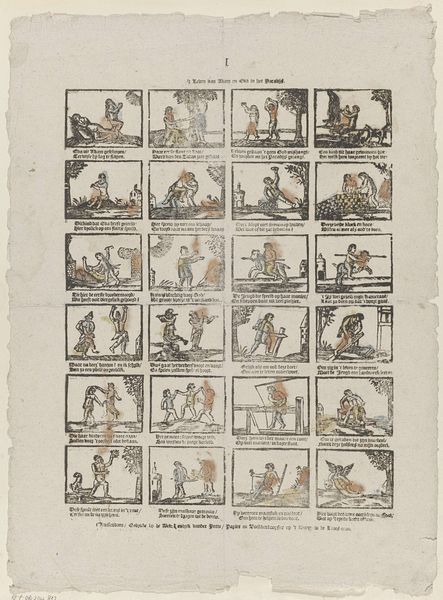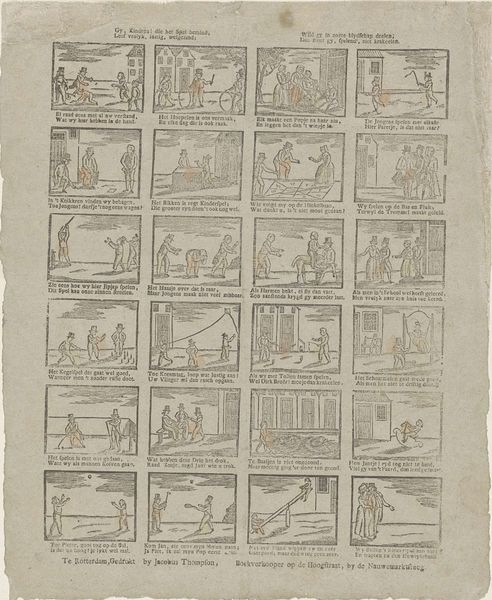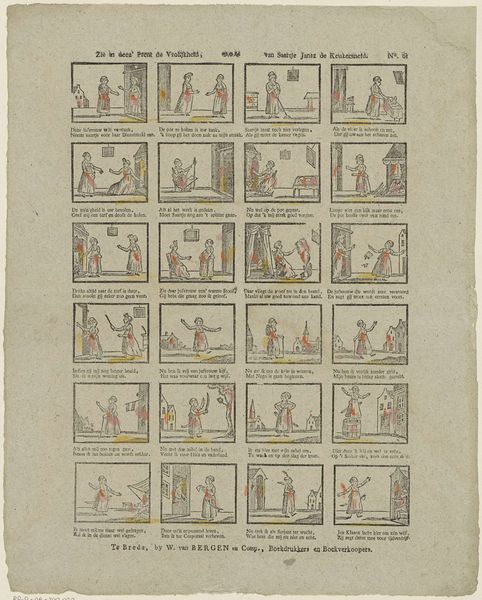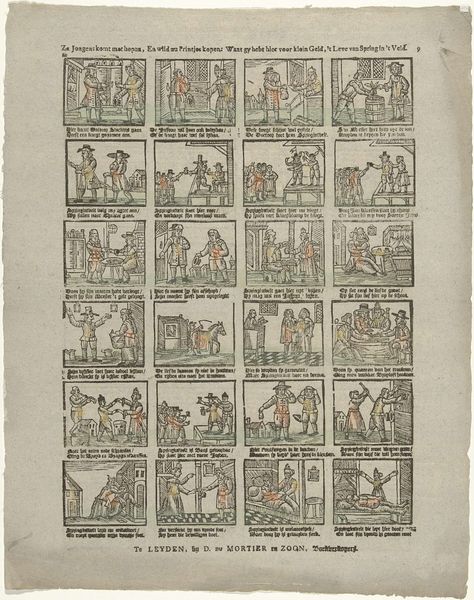
Jongens wil je vreugd vermeeren, Wilt in deeze prent studeeren, Want het is van tetjeroen, Die een ieder kon voldoen. / Zoo gy u meer wilt verblyen, Maak hier van dan schilderyen, Snyt ze uit mooi na de zwier, En plak ze dan op bord papier 1791 - 1812
0:00
0:00
jacobusthompson
Rijksmuseum
graphic-art, print, etching, woodcut, engraving
#
graphic-art
#
comic strip sketch
#
narrative-art
#
dutch-golden-age
# print
#
etching
#
woodcut
#
comic
#
genre-painting
#
engraving
Dimensions: height 398 mm, width 335 mm
Copyright: Rijks Museum: Open Domain
This print, made in Rotterdam by Jacobus Thompson, is a fascinating example of early commercial imagery. It's printed on paper, a relatively inexpensive material at the time, and the lines are made using a technique like woodcut or engraving, allowing for multiple impressions. What I find interesting is how the material itself dictates the artwork's accessibility. Paper wasn't as precious as parchment, meaning these images could reach a wider audience. You can also see the directness of the printing process - the bold lines, the slightly uneven registration of colors. These aren't refined details; they’re born of efficiency. Consider the labor involved: the block cutter, the printer, and the bookseller. This print wasn't just art; it was a product of a burgeoning capitalist system, designed for consumption, and even encouraging the viewer to participate by cutting out the images and sticking them onto paper. Ultimately, this work blurs the lines between art, craft, and commodity, reminding us that even seemingly simple images are deeply embedded in their social and economic context.
Comments
No comments
Be the first to comment and join the conversation on the ultimate creative platform.
